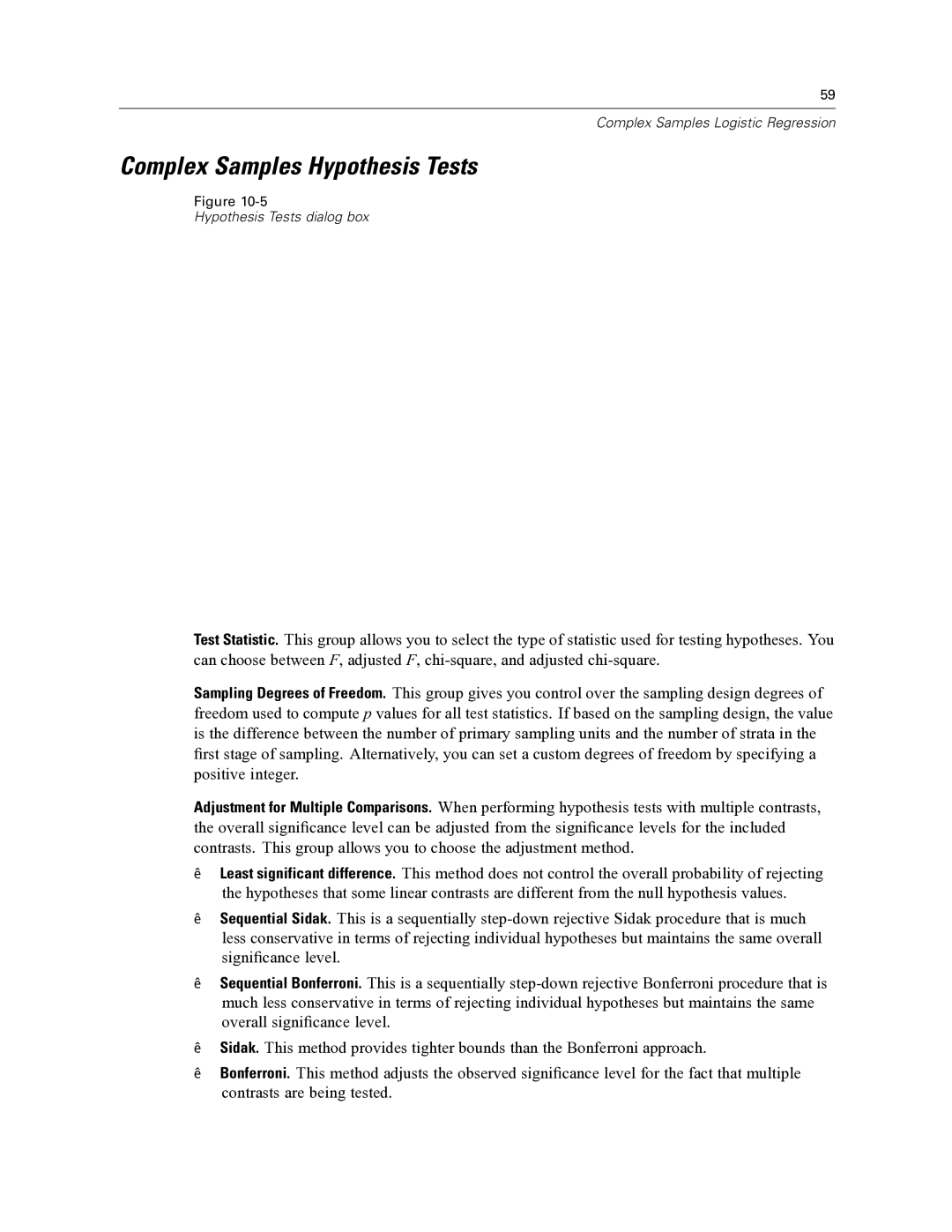
59
Complex Samples Logistic Regression
Complex Samples Hypothesis Tests
Figure
Hypothesis Tests dialog box
Test Statistic. This group allows you to select the type of statistic used for testing hypotheses. You can choose between F, adjusted F,
Sampling Degrees of Freedom. This group gives you control over the sampling design degrees of freedom used to compute p values for all test statistics. If based on the sampling design, the value is the difference between the number of primary sampling units and the number of strata in the first stage of sampling. Alternatively, you can set a custom degrees of freedom by specifying a positive integer.
Adjustment for Multiple Comparisons. When performing hypothesis tests with multiple contrasts, the overall significance level can be adjusted from the significance levels for the included contrasts. This group allows you to choose the adjustment method.
Least significant difference. This method does not control the overall probability of rejecting the hypotheses that some linear contrasts are different from the null hypothesis values.
Sequential Sidak. This is a sequentially
Sequential Bonferroni. This is a sequentially
Sidak. This method provides tighter bounds than the Bonferroni approach.
Bonferroni. This method adjusts the observed significance level for the fact that multiple contrasts are being tested.
